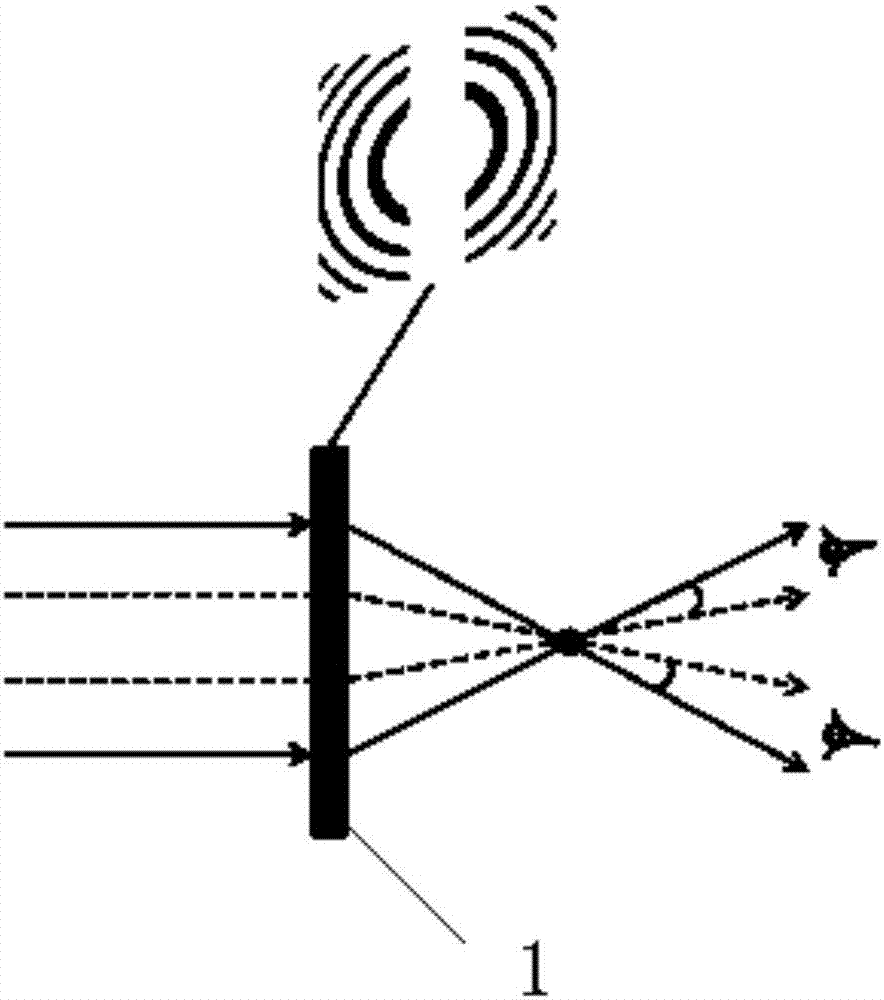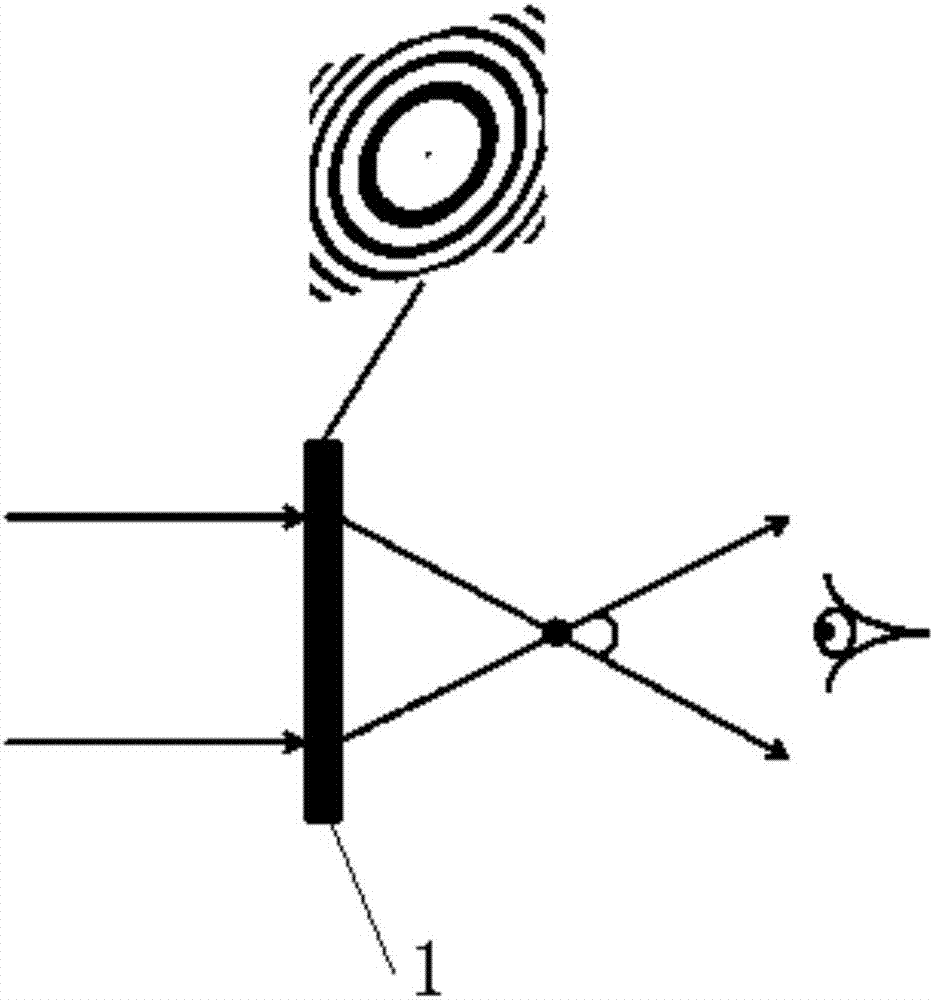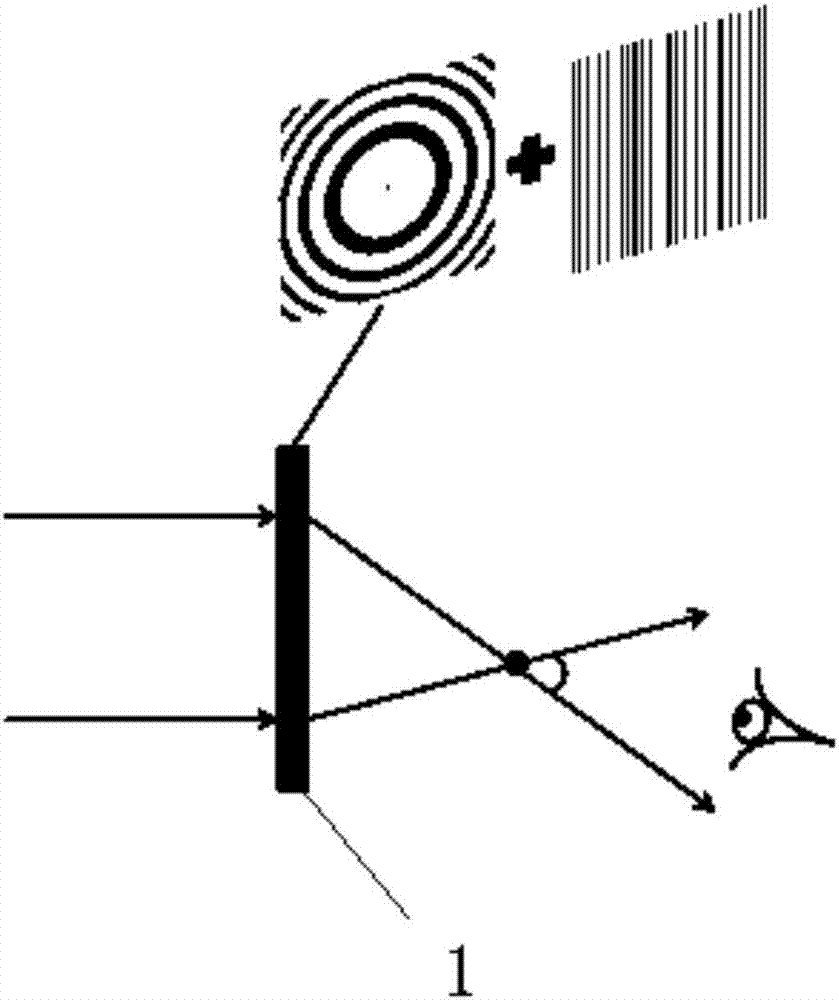Computer-generated holography three-dimensional display method and system capable of expressing shielding relation of reproduced image
A technology of occlusion relationship and calculation holography, which is applied in the direction of instruments, etc., can solve the problems of insufficient space bandwidth product, difficulty in realizing dynamic three-dimensional display, low accuracy of occlusion relationship, etc., and achieve the effect of improving the space bandwidth product
- Summary
- Abstract
- Description
- Claims
- Application Information
AI Technical Summary
Problems solved by technology
Method used
Image
Examples
Embodiment 1
[0030] Embodiment 1: A computational holographic three-dimensional display method capable of expressing the occlusion relationship of reconstructed images, including the following steps:
[0031] 1) Step of designing a primitive hologram: decompose the three-dimensional object into a series of voxel points, the voxel point is the smallest component unit of the three-dimensional object, and design the corresponding numbers of each voxel point according to the intensity and position of each voxel point The Fresnel lens acts as a primitive hologram, and the intensity here refers to the light intensity, which is used to represent the brightness information of the voxel point on the three-dimensional object;
[0032] 2) Step of cutting the occluded information: determine the propagation direction of each voxel point according to the occlusion relationship between each voxel point, and realize the occlusion relationship by programmatically cutting the primitive hologram. On the meta...
Embodiment 2
[0038] Embodiment 2: A computational holographic three-dimensional display method capable of expressing the occlusion relationship of reproduced images, which is a further step on the basis of Embodiment 1:
[0039] 1) The step of designing a primitive hologram: decompose the three-dimensional object into a series of voxel points, the voxel point is the smallest component unit of the three-dimensional object, and the digital Fresnel lens designed according to the intensity and position of each voxel point As a primitive hologram, a digital grating is added to the digital Fresnel lens by encoding, and the lateral position of the voxel point is regulated by changing the period and orientation of the digital grating;
[0040] 2) Step of cutting the occluded information: according to the occlusion relationship between each voxel point, the propagation direction of each voxel point is determined, and the occlusion relationship is realized by programmatically cutting the primitive ho...
Embodiment 3
[0048] Embodiment 3: A computational holographic three-dimensional display method capable of expressing the occlusion relationship of reproduced images, using converging spherical wave illumination or placing a lens in the light path of parallel light wave illumination to build a holographic reproduction system. Considering that the physical parameters such as pixel size and resolution of commercial spatial light modulators are limited, this will lead to a narrower viewing angle of reproduction voxel points, a smaller control range of spatial light modulators, and a cutting range of viewing angles of voxel points. For smaller problems, the above-mentioned technical problems can be effectively solved by using converging spherical wave illumination or placing a lens in the optical path of parallel light wave illumination, such as Figure 5 to Figure 8 shown. Figure 5 Under the condition of parallel light illumination and a rear lens in the optical path, the schematic diagram of...
PUM
 Login to View More
Login to View More Abstract
Description
Claims
Application Information
 Login to View More
Login to View More - R&D Engineer
- R&D Manager
- IP Professional
- Industry Leading Data Capabilities
- Powerful AI technology
- Patent DNA Extraction
Browse by: Latest US Patents, China's latest patents, Technical Efficacy Thesaurus, Application Domain, Technology Topic, Popular Technical Reports.
© 2024 PatSnap. All rights reserved.Legal|Privacy policy|Modern Slavery Act Transparency Statement|Sitemap|About US| Contact US: help@patsnap.com










